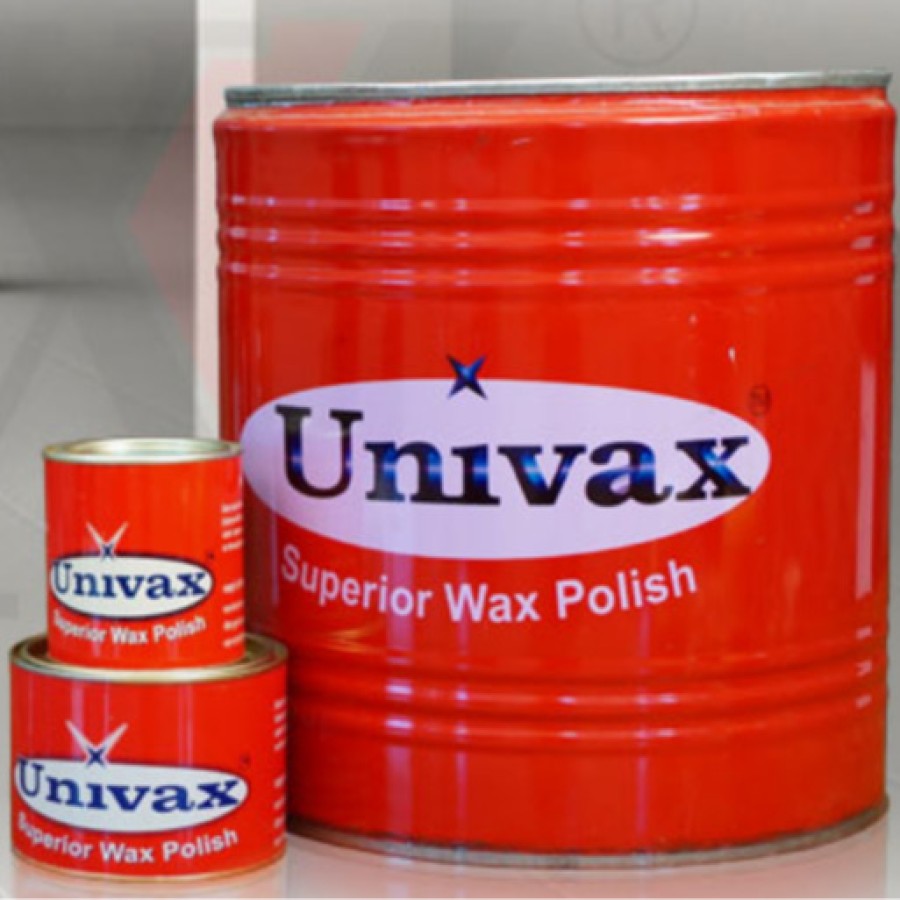
Mold Release Wax
By Maxwax Multiproducts LLP
Mould Release Wax is a general purpose release wax that is a blend of natural waxes
- with modern polymers and hydrocarbon waxes. Mould Release Wax Easy to use, high performance product with complete versatility.
It is recommended that a Polyvinyl Alcohol (PVA) solution be used in conjunction with Mould Release Wax on moulds that are new or reconditioned or that are particularly intricate or too expensive to risk demoulding problems.
GENERAL INFORMATION
PREPARATION OF MOULD SURFACE
Porous moulds (i.e., plaster or wood) must first be sealed with lacquer or similar coating. A good surface on plaster may be obtained with automobile type primer-sealers and lacquers. Mould should be thoroughly dry and free of other parting agents prior to application of Mould Release Wax.
APPLICATION OF MOULD RELEASE WAX
New / Reconditioned Moulds
Use a clean dry rag and apply a thin even coat of Mould Release Wax to mould surface. Excess should be wiped away, also using a clean dry rag. Hand-buff waxed surface using clean Turkish toweling when moderately dry (approximately 10-12 minutes after application). If wax wipes away easily or “balls up” when buffing, Mould Release Wax has not been allowed to dry long enough. Buff until high gloss appears - mould surface should be smooth and free of streaks or smudges. In order to insure complete coverage, apply 2-3 coats during initial usage. Use alternating rubbing motions during application of each coat (i.e., up-down, left-right, circular). Apply one coat of Mould Release Wax following each cycle thereafter until mould is broken in. Wait at least one hour after application of final coat before proceeding with moulding.
Seasoned Moulds
Using the same process described for new moulds, apply one coat of Mould Release
Wax to mould surface and buff. Re-wax mould as necessary.
REMOVING PART FROM MOULD
The best procedure for separating parts from a mould depends on the size and shape of the part. In most cases a part can be lifted from the mould after loosening around the edges. A jet of air
between the part and mould at the edge is sometimes useful. On large curved parts it may be
necessary to first tap over the surface with a rubber mallet.
- with modern polymers and hydrocarbon waxes. Mould Release Wax Easy to use, high performance product with complete versatility.
It is recommended that a Polyvinyl Alcohol (PVA) solution be used in conjunction with Mould Release Wax on moulds that are new or reconditioned or that are particularly intricate or too expensive to risk demoulding problems.
GENERAL INFORMATION
PREPARATION OF MOULD SURFACE
Porous moulds (i.e., plaster or wood) must first be sealed with lacquer or similar coating. A good surface on plaster may be obtained with automobile type primer-sealers and lacquers. Mould should be thoroughly dry and free of other parting agents prior to application of Mould Release Wax.
APPLICATION OF MOULD RELEASE WAX
New / Reconditioned Moulds
Use a clean dry rag and apply a thin even coat of Mould Release Wax to mould surface. Excess should be wiped away, also using a clean dry rag. Hand-buff waxed surface using clean Turkish toweling when moderately dry (approximately 10-12 minutes after application). If wax wipes away easily or “balls up” when buffing, Mould Release Wax has not been allowed to dry long enough. Buff until high gloss appears - mould surface should be smooth and free of streaks or smudges. In order to insure complete coverage, apply 2-3 coats during initial usage. Use alternating rubbing motions during application of each coat (i.e., up-down, left-right, circular). Apply one coat of Mould Release Wax following each cycle thereafter until mould is broken in. Wait at least one hour after application of final coat before proceeding with moulding.
Seasoned Moulds
Using the same process described for new moulds, apply one coat of Mould Release
Wax to mould surface and buff. Re-wax mould as necessary.
REMOVING PART FROM MOULD
The best procedure for separating parts from a mould depends on the size and shape of the part. In most cases a part can be lifted from the mould after loosening around the edges. A jet of air
between the part and mould at the edge is sometimes useful. On large curved parts it may be
necessary to first tap over the surface with a rubber mallet.
Product Description
Mould Release Wax is a general purpose release wax that is a blend of natural waxes
- with modern polymers and hydrocarbon waxes. Mould Release Wax Easy to use, high performance product with complete versatility.
It is recommended that a Polyvinyl Alcohol (PVA) solution be used in conjunction with Mould Release Wax on moulds that are new or reconditioned or that are particularly intricate or too expensive to risk demoulding problems.
GENERAL INFORMATION
PREPARATION OF MOULD SURFACE
Porous moulds (i.e., plaster or wood) must first be sealed with lacquer or similar coating. A good surface on plaster may be obtained with automobile type primer-sealers and lacquers. Mould should be thoroughly dry and free of other parting agents prior to application of Mould Release Wax.
APPLICATION OF MOULD RELEASE WAX
New / Reconditioned Moulds
Use a clean dry rag and apply a thin even coat of Mould Release Wax to mould surface. Excess should be wiped away, also using a clean dry rag. Hand-buff waxed surface using clean Turkish toweling when moderately dry (approximately 10-12 minutes after application). If wax wipes away easily or “balls up” when buffing, Mould Release Wax has not been allowed to dry long enough. Buff until high gloss appears - mould surface should be smooth and free of streaks or smudges. In order to insure complete coverage, apply 2-3 coats during initial usage. Use alternating rubbing motions during application of each coat (i.e., up-down, left-right, circular). Apply one coat of Mould Release Wax following each cycle thereafter until mould is broken in. Wait at least one hour after application of final coat before proceeding with moulding.
Seasoned Moulds
Using the same process described for new moulds, apply one coat of Mould Release
Wax to mould surface and buff. Re-wax mould as necessary.
REMOVING PART FROM MOULD
The best procedure for separating parts from a mould depends on the size and shape of the part. In most cases a part can be lifted from the mould after loosening around the edges. A jet of air
between the part and mould at the edge is sometimes useful. On large curved parts it may be
necessary to first tap over the surface with a rubber mallet.
- with modern polymers and hydrocarbon waxes. Mould Release Wax Easy to use, high performance product with complete versatility.
It is recommended that a Polyvinyl Alcohol (PVA) solution be used in conjunction with Mould Release Wax on moulds that are new or reconditioned or that are particularly intricate or too expensive to risk demoulding problems.
GENERAL INFORMATION
PREPARATION OF MOULD SURFACE
Porous moulds (i.e., plaster or wood) must first be sealed with lacquer or similar coating. A good surface on plaster may be obtained with automobile type primer-sealers and lacquers. Mould should be thoroughly dry and free of other parting agents prior to application of Mould Release Wax.
APPLICATION OF MOULD RELEASE WAX
New / Reconditioned Moulds
Use a clean dry rag and apply a thin even coat of Mould Release Wax to mould surface. Excess should be wiped away, also using a clean dry rag. Hand-buff waxed surface using clean Turkish toweling when moderately dry (approximately 10-12 minutes after application). If wax wipes away easily or “balls up” when buffing, Mould Release Wax has not been allowed to dry long enough. Buff until high gloss appears - mould surface should be smooth and free of streaks or smudges. In order to insure complete coverage, apply 2-3 coats during initial usage. Use alternating rubbing motions during application of each coat (i.e., up-down, left-right, circular). Apply one coat of Mould Release Wax following each cycle thereafter until mould is broken in. Wait at least one hour after application of final coat before proceeding with moulding.
Seasoned Moulds
Using the same process described for new moulds, apply one coat of Mould Release
Wax to mould surface and buff. Re-wax mould as necessary.
REMOVING PART FROM MOULD
The best procedure for separating parts from a mould depends on the size and shape of the part. In most cases a part can be lifted from the mould after loosening around the edges. A jet of air
between the part and mould at the edge is sometimes useful. On large curved parts it may be
necessary to first tap over the surface with a rubber mallet.
Related Sectors
Auto Components
Chemicals
Manufacturing
Web Link
Brand
Univax
Package Type
tin
Usage Application
Fibre glass molding
Guarantee
24 months
Warranty
24 months
About the Company
Login to see seller contact details.

